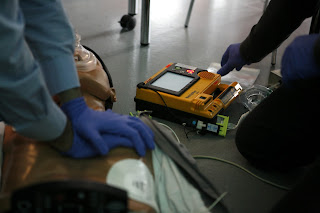Journal Club Summary
Methodology Score: 4/5
Usefulness Score: 4/5
Stiell IG, Brown SP, Nichol G, et al.
Circulation. 2014 Nov 25;130(22):1962-70
This observational study found that an optimal CPR chest compression depth of 40 – 55 mm was strongly associated with improved survival to hospital discharge, although survival declines beyond this upper limit. The group agreed that this was a practice changing study that led to a change in the 2015 AHA Guidelines; there was also discussion about the utility of CPR feedback devices in the ED setting
By: Dr. Krishan Yadav
Presented November 2015
Epi lesson:
Prognosis Articles in Emergency Medicine
Emergency physicians generally do not counsel patients on long-term outcomes. We are, however, concerned about prognosis in several ways. First, we need to know what the short-term outcomes are likely to be for patients with common serious conditions like heart failure, COPD, etc. Risk stratification tools can help us, particularly with regards to disposition and follow-up. Second, we need to know the evidence that a given treatment may lead to better outcomes in the very common situations where there have been no RCTs or an RCT is unlikely to be conducted. For example, many aspects of CPR, particularly by lay bystanders will be difficult to evaluate by RCTs; in such cases, cohort studies can be useful.
By: Dr. Ian Stiell

